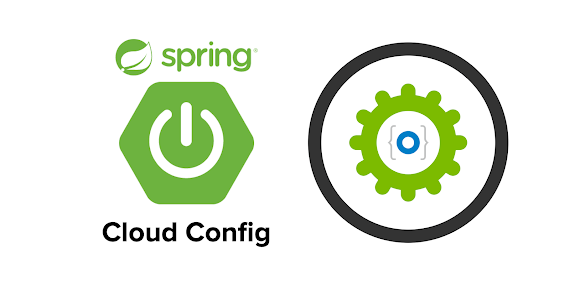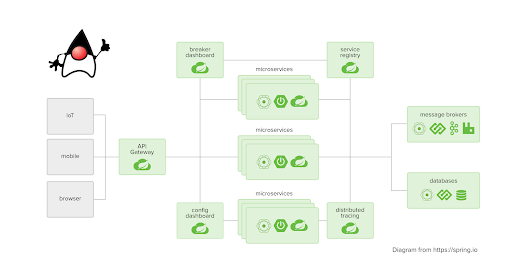Hello guys, if you are doing Java development and created Microservices then you may know that Spring Boot and Spring Cloud are two popular Java-based frameworks that are widely used for building enterprise-level applications, particularly Server side backend Java application. Both of these frameworks are developed by the Spring team and offer unique features that make them stand out in the market. While both are used for building scalable, high-performance, and robust Java applications, they serve different purposes and are used in different ways. The aim of this article is to help Java developers understand the differences between Spring Boot and Spring Cloud and make an informed decision on which framework to use for their next project.
To start with, Spring Boot is a Java framework for building standalone, production-grade Spring-based applications quickly and with minimal setup. It provides a set of opinionated defaults and pre-configurations, which allows developers to focus on writing business logic rather than configuring the application.
Spring Boot also comes with a wide range of features such as auto-configuration, starter-dependency, embedded Tomcat, Jetty, and Undertow servers, and monitoring assistance using Actuators.
On the other hand, Spring Cloud is a framework for building distributed systems and microservices architectures. It builds on top of Spring Boot and provides a set of additional features such as service discovery, configuration management, distributed tracing, and circuit breakers. Spring Cloud is designed to work with cloud-native architectures and supports various cloud platforms such as AWS, Azure, and Google Cloud.
Now that you know the basic difference between Spring Boot and Spring Cloud framework, let's deep dive into them and learn more about them.
What is Spring Boot Framework?
Spring Boot is a framework for building microservices and standalone applications. It provides a number of pre-configured settings and options that make it easy for developers to get started with building an application. With Spring Boot, you can quickly create a new project without having to worry about the underlying configurations.
Spring Boot offers a number of features that make it a popular choice for building microservices, such as:
- Auto-configuration: Spring Boot automatically configures the application based on the dependencies it detects. This makes it easy for developers to get started with building their applications without having to worry about the underlying configurations.
- Embedded servers: Spring Boot comes with embedded servers that make it easy to run the application without having to install and configure a separate server.
- Actuator: The Actuator is a tool that provides insight into the application's health and performance. It provides information on metrics, health checks, and more.
- CLI: Spring Boot CLI is a command-line interface that makes it easy to create and run Spring Boot applications.
What is Spring Cloud Framework?
Spring Cloud is a framework for building Microservices and distributed systems. It provides a number of features, tools and services that make it easy for developers to build and deploy cloud-native applications. Spring Cloud provides a number of features that make it a popular choice for building distributed systems, such as:- Service Discovery: Spring Cloud provides a service discovery mechanism that makes it easy for services to discover and communicate with each other.
- Load Balancing: Spring Cloud provides load balancing capabilities that make it easy for developers to distribute the load across multiple instances of a service.
- Config Server: Spring Cloud provides a config server that makes it easy for developers to manage configuration settings for their applications.
- Circuit Breaker: Spring Cloud provides a circuit breaker mechanism that makes it easy for developers to handle failures in their applications.
- Distributed Tracing: Spring Cloud provides a distributed tracing mechanism that makes it easy for developers to trace requests and responses across multiple services.
Differences between Spring Boot and Spring Cloud Framework
Here are main differences between Spring Boot and Spring Cloud Framework in point format for easier understanding. These differences ranges from their purpose like when to use them to the various features and functionalities they provide.
1. Purpose
As mentioned earlier, Spring Boot is primarily used for building microservices and standalone applications, whereas Spring Cloud is used for building distributed systems.
2. Dependencies
Spring Boot provides a number of pre-configured dependencies that make it easy for developers to get started with building their applications. On the other hand, Spring Cloud requires developers to add the required dependencies for each feature they want to use.
3. Complexity
Spring Boot is easier to use and provides more pre-configured settings, making it easier for developers to get started with building their applications. Spring Cloud, on the other hand, requires more configuration and setup, making it more complex to use.
4. Features
While both Spring Boot and Spring Cloud offer a number of features, Spring Cloud provides a wider range of features specifically designed for building distributed systems, such as service discovery, load balancing, circuit breaker, and more.
Spring Boot and Spring Cloud Framework Examples
Here are a few examples of how you might use Spring Boot and Spring Cloud in your projects.
Example 1: Building a Microservice
Let's say you want to build a microservice that provides information about books. With Spring Boot, you can quickly create a new project and add the required dependencies for your application. Once you have created the project, you can start building the microservice by defining the endpoint that will return information about books.
The Actuator in Spring Boot will provide information on the health of your application and allow you to monitor its performance.
Example 2: Building a Distributed System
Let's say you want to build a distributed system that consists of multiple services that communicate with each other. With Spring Cloud, you can use the service discovery mechanism to discover and communicate with other services.
You can also use the load balancing mechanism to distribute the load across multiple instances of a service.
The circuit breaker mechanism in Spring Cloud will make it easy for you to handle failures in your application, and the distributed tracing mechanism will make it easy for you to trace requests and responses across multiple services.
Here is a nice diagram which shows distributed System architecture:
Spring Boot and Spring Cloud Frequently Asked Questions
1. What is the main difference between Spring Boot and Spring Cloud?
The main difference between Spring Boot and Spring Cloud is their purpose. Spring Boot is a framework for building microservices and standalone applications, while Spring Cloud is a framework for building distributed systems.
2. Can I use both Spring Boot and Spring Cloud in a single project?
Yes, you can use both Spring Boot and Spring Cloud in a single project. In fact, many projects make use of both frameworks to take advantage of their unique features.
3. Does Spring Boot provide features for building distributed systems?
While Spring Boot does not provide features specifically for building distributed systems, it does provide features for building microservices, such as auto-configuration, embedded servers, and the Actuator.
4. Is Spring Cloud easier to use than Spring Boot?
The ease of use of Spring Cloud and Spring Boot depends on the requirements of your project. While Spring Boot provides more pre-configured settings and is easier to use for building microservices, Spring Cloud requires more configuration and setup and is better suited for building distributed systems.
5. What is the best use case for using Spring Boot and Spring Cloud?
The best use case for using Spring Boot and Spring Cloud will depend on the requirements of your project. If you're building a microservice, Spring Boot may be the better choice. If you're building a distributed system, Spring Cloud may be the better choice.
Conclusion
That's all about difference between Spring Boot and Spring Cloud framework for Java developers. In conclusion, Spring Boot and Spring Cloud are both powerful frameworks for building enterprise-level applications.
While they share some similarities, they serve different purposes and are used in different ways. Spring Boot is a framework for building microservices and standalone applications, while Spring Cloud is a framework for building distributed systems and Microservices
The choice between Spring Boot and Spring Cloud will depend on the requirements of your project and the specific features you need. Whether you're building a microservice or a distributed system, both Spring Boot and Spring Cloud offer a number of features that make it easy for developers to build high-quality, scalable, and robust applications.
Other Java and Spring Articles, Resources and Tutorials you may like to explore
Thanks for reading this article so far. If you like my explanation of difference between Spring Boot and Spring Cloud framework then please share them with your friends and colleagues. If you have any questions or feedback, then please drop a note.
- Top 5 Courses to Learn and Master Spring Cloud
- 10 Books Java Developers Should Read
- 10 Advanced Spring Boot Courses for Experienced Java Developers
- 10 Things Java Developer Should Learn
- How to use @RequestBody and @ResponseBody in Spring
- Top 5 Courses to learn Spring Cloud and Microservices
- 5 Free Courses to Learn Spring Framework
- Top 10 Courses to learn Microservices in Java with Spring Boot
- 5 Spring Books Experienced Java Developer Should Read
- Top 5 Books and Courses to learn RESTful Web Services in Java
- What is SAGA Pattern in Microservices Architecture?
- 5 Courses to Learn Spring Security in depth
- Top 5 Frameworks Java Developer Should Know
- 10 Tips to become a better Java Developer
- Top 15 Spring Boot Interview Questions for Java Developers
- 10 Spring Boot Annotations Java Developers should know
- Difference between Spring Framework and Spring Boot
Thanks for reading this article so far. If you like my explanation of difference between Spring Boot and Spring Cloud framework then please share them with your friends and colleagues. If you have any questions or feedback, then please drop a note.















No comments :
Post a Comment